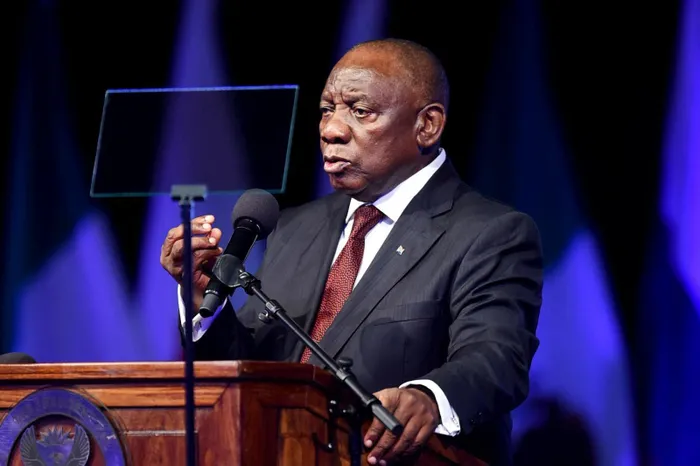
South Africa teeters on the brink of economic disaster, with President Cyril Ramaphosa facing fierce criticism as US trade tariffs, soaring unemployment, and rising household costs threaten growth.
Image: Itumeleng English / Independent Newspapers
South Africa is hurtling toward what some economists warn could be an economic disaster, with President Cyril Ramaphosa accused of leaving the country in an untenable position as US trade tariffs, record unemployment, surging household costs and a weakening rand weigh on growth.
Yael Geffen, CEO of Lew Geffen Sotheby’s International Realty, said last week’s rate cut is little more than a temporary reprieve. “We’re on the precipice of an economic disaster and while this rate cut will help for now, it might come back to bite us in the long-term,” she said.
Geffen laid the blame directly at the president’s feet. “President Cyril Ramaphosa will go down in history as the president who fiddled while Rome burned. Not only that, but he lit the match,” she said. “Ramaphosa has backed the country into an untenable economic position from which we will need a miracle to escape.”
She warned that the imposition of US trade tariffs will hit South Africa’s most significant industries at a time when households are already buckling. “We have record unemployment; basic household costs, such as electricity, have risen by several hundred percent in recent years, and on average, households are spending an alarming two thirds of their income servicing debt.”
Izak Odendaal, investment strategist at Old Mutual Wealth, said the tariffs would be a headwind for key sectors such as agriculture and automotive manufacturing but noted that “higher US import duties are not a recession-inducing event. This is partly because only 8% of the country’s exports go to the US, but mainly because of the positive impact of lower inflation and interest rates which has lifted consumer spending.”
FNB CEO Harry Kellan added that although certain industries would feel the impact of tariffs, “this does not fully erode the good growth momentum across the economy as we expect to see real growth for 2025 to be better than 2024.”
Still, Odendaal cautioned that economic growth forecasts have been cut. “At the start of the year, projections for 2025 were around 1.8% to 2%. They are now closer to 1% to 1.5%. Incorporating the tariff impact, the Reserve Bank cut its forecast to 0.9% for 2025, rising to 2% by 2027.”
While there will be structural reforms to boost investment and the economy, “will take time to bear fruit,” said Odendaal.
Greg Dart, director of High Street Auction Co, said “no-one really knows the exact impact of the imposition of tariffs by one of the country’s largest trade partners”. The US is South Africa’s second-largest trade partner.
“Just as tariffs might lead to increased job losses and fully realise predictions that economic growth will be below the 1% mark this year, these [tariffs] could be the so-called last straw that sparks government and even the private sector to re-ignite long-overdue industrialisation and growth in manufacturing,” said Dart.
Meanwhile, the rand, which has been under pressure for weeks, was trading at R18.01 to the dollar this afternoon, an improvement from R18.36 last week. Investec chief economist Annabel Bishop attributed the volatility to both the tariffs and a stronger dollar.
FAST COMPANY
Related Topics:
